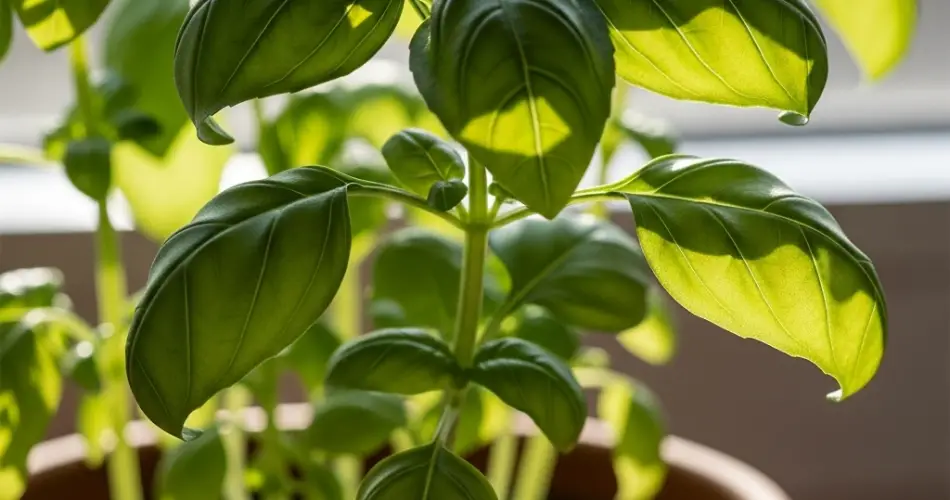Basil is one of the most popular and versatile herbs to grow, loved for its fragrant leaves that add a fresh burst of flavor to many dishes. Whether you want to grow it for cooking, teas, or simply to enjoy its lovely aroma, basil is a fantastic choice for beginners. It’s easy to cultivate, requires minimal care, and grows quickly even for those new to gardening.
This guide will take you through the simple steps to develop healthy, vibrant basil plants from seed or seedlings, no previous gardening experience required.
Why Grow Basil?
Basil offers multiple benefits beyond its delicious flavor:
-
Easy to grow: Basil thrives indoors and outdoors with minimal fuss.
-
Fast-growing: You can harvest leaves in just a few weeks.
-
Compact: Perfect for small spaces or container gardening.
-
Health benefits: Rich in antioxidants and vitamins.
-
Pest-repellent: Helps keep some garden pests away.
Selecting the Right Basil Variety
There are many varieties of basil, each with unique flavors and uses. For beginners, the following varieties are most common and easy to grow:
-
Sweet Basil: The classic choice for pesto and Italian cooking.
-
Genovese Basil: A type of sweet basil with large leaves, ideal for cooking.
-
Thai Basil: Offers a slightly spicy, licorice-like flavor.
-
Lemon Basil: Has a citrusy aroma perfect for teas and salads.
Choose the variety that best suits your culinary preferences and space.
Starting Basil from Seeds or Seedlings
You can start basil from seeds or buy young plants from a nursery.
Starting from seeds:
-
Sow seeds indoors 6-8 weeks before the last expected frost if planting outdoors.
-
Use a seed-starting mix and lightly cover seeds with soil.
-
Keep the soil moist and warm (70-75°F or 21-24°C) for germination.
-
Seeds usually sprout within 5-10 days.
Using seedlings:
-
Purchase healthy, vibrant basil plants from a garden center.
-
Transplant into your pot or garden with care to avoid root damage.
Choosing the Right Growing Medium and Container
Basil grows best in well-draining soil rich in organic matter.
-
Use a high-quality potting mix for container plants.
-
If planting in the garden, amend the soil with compost.
-
Containers should have drainage holes to prevent waterlogging.
-
Choose pots that are at least 6-8 inches deep for good root development.
Optimal Light Requirements
Basil requires plenty of sunlight to grow strong and flavorful.
-
Provide at least 6 hours of direct sunlight per day.
-
A south- or west-facing windowsill is ideal for indoor plants.
-
If natural light is insufficient, supplement with fluorescent grow lights for 10-12 hours daily.
Without enough light, basil will become leggy and weak.
Watering and Moisture Control
Proper watering is key to healthy basil.
-
Keep the soil consistently moist but not soggy.
-
Water when the top inch of soil feels dry.
-
Water at the base of the plant to avoid wetting the leaves, which can cause disease.
-
Avoid overwatering to prevent root rot.
During hot weather or dry indoor air, basil may require more frequent watering.
Fertilizing Basil for Healthy Growth
Basil benefits from regular feeding to support its fast growth.
-
Use a balanced, water-soluble fertilizer every 2-3 weeks during the growing season.
-
Alternatively, mix slow-release organic fertilizer into the soil at planting.
-
Avoid excessive nitrogen fertilizers, which encourage leaf growth but reduce flavor intensity.
Pruning and Harvesting for Continuous Growth
Pruning basil not only provides you with fresh leaves but also encourages bushier plants.
-
Pinch off the top sets of leaves regularly, just above a leaf node.
-
Remove flower buds as soon as they appear to prevent the plant from going to seed and losing flavor.
-
Harvest leaves by cutting stems with clean scissors or pinch them gently.
-
Frequent harvesting promotes new leaf growth and extends the plant’s productive life.
Preventing and Managing Common Problems
-
Leggy growth: Caused by insufficient light; move plants to a sunnier location.
-
Yellow leaves: Often a sign of overwatering or poor drainage.
-
Pests: Watch for aphids, whiteflies, or spider mites. Treat with insecticidal soap if necessary.
-
Fungal diseases: Avoid overhead watering and provide good air circulation.
Transplanting Basil Outdoors
If starting indoors, you can transplant basil outdoors once the danger of frost has passed.
-
Harden off seedlings by gradually exposing them to outdoor conditions over a week.
-
Choose a sunny location with well-draining soil.
-
Space plants 12-18 inches apart to allow airflow and growth.
Companion Planting Benefits
Basil grows well alongside tomatoes, peppers, and oregano, enhancing their flavors and repelling pests.
Summary
Developing basil successfully requires just a few simple steps and some regular attention:
-
Choose your favorite variety and start from seeds or seedlings.
-
Provide well-draining soil, a suitable container, and plenty of light.
-
Water consistently without overdoing it.
-
Fertilize moderately and prune often to encourage lush growth.
-
Monitor for pests and diseases and act quickly if they appear.
With these straightforward tips, even beginners can enjoy a thriving basil plant, ready to enhance your meals and home with fresh, fragrant leaves. Growing basil is a rewarding and easy introduction to gardening, perfect for anyone wanting fresh herbs at their fingertips.



